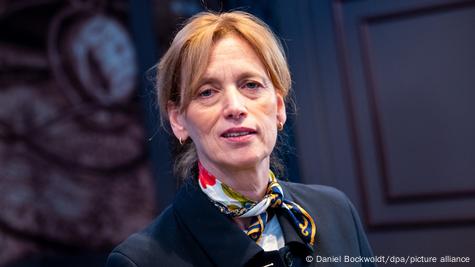Written By Faith Mwende
A controversial proposal by Germany’s Education Minister Karin Prien has ignited a fierce national debate over immigration, equality, and education policy.
Prien, a member of the center-right Christian Democratic Union (CDU), suggested implementing a quota system to limit the number of immigrant children in German schools. Her idea: study models from other countries to determine a possible cap, which she hinted could range from 30% to 40%.
The reaction from educators, students, and experts has been swift and largely critical.
Sabine Schwarz, principal of an elementary school in North Rhine-Westphalia, Germany’s most populous state, expressed disbelief when she first heard about the proposal through a friend. “I thought it was a bad joke,” she said. At her school, over 80% of the 350 students come from immigrant backgrounds. “We don’t even have enough children who would qualify as German-speaking,” she told DW.
Schwarz points out that the reality on the ground would make implementing such a quota not only discriminatory but practically impossible. Her school, located near affluent homes, has witnessed many local German families opting to send their children elsewhere largely due to negative perceptions about learning in classes with high immigrant representation. This avoidance became easier after North Rhine-Westphalia eliminated the rule that required students to attend their neighborhood primary school.
Schwarz, however, challenges the assumption that immigrant students are less capable or slow learners. “We actually benefited from the 2015 refugee wave. Many children who arrived were highly motivated to succeed academically,” she noted. In her experience, lumping all immigrant children into one category is inaccurate and harmful. “There are traumatized children who need time to heal, and there are those who are eager and ready to learn. We should not treat them as a single group.”
Her school operates under a simple but powerful motto: Every child is welcome, no matter where they come from. And no child is abandoned.
Supporters of Prien’s proposal, such as Stefan Düll, president of the German Teachers’ Association, welcome the conversation but admit the quota idea is unlikely to be enacted. He emphasized that the challenge lies in language proficiency, not cultural background. “Teaching becomes significantly harder when many students lack strong German language skills,” Düll said. But he added that redistributing students to balance immigrant populations isn’t a viable solution and could hurt social cohesion. Instead, he praised the government’s recent allocation of €20 billion to support 4,000 schools that serve high numbers of immigrant students.
Klaus Hurrelmann, a prominent education researcher, acknowledged the value of balanced and diverse school environments but warned against the dangers of implementing quotas. “It may seem logical, but it would backfire,” he said. According to Hurrelmann, such policies risk deepening divisions and fueling discrimination, even if well-intentioned. He believes schools need more language support and resources, not exclusionary quotas.
Germany’s student body echoed these concerns in a sharply worded statement. The Bundesschülerkonferenz (Federal Students’ Conference) condemned the proposal, saying it sends the message that immigrant children are less welcome. “Education should be about inclusion, not exclusion,” they said. The group argued that quotas stigmatize rather than support students and fail to promote a fair system.
Still, the students did find some common ground with Prien. They supported her idea of implementing German-language aptitude tests for all children at age four but stressed that the tests should apply universally, not just to immigrant children. “Only if every child is tested, and early, comprehensive support is provided where needed, can we ensure equal starting opportunities,” the statement read.
As Germany continues to grapple with demographic changes and rising diversity in classrooms especially in urban centers where immigrant populations are much higher the question remains: how can the country balance integration, language support, and equality in its schools without alienating the very children it aims to educate?



















